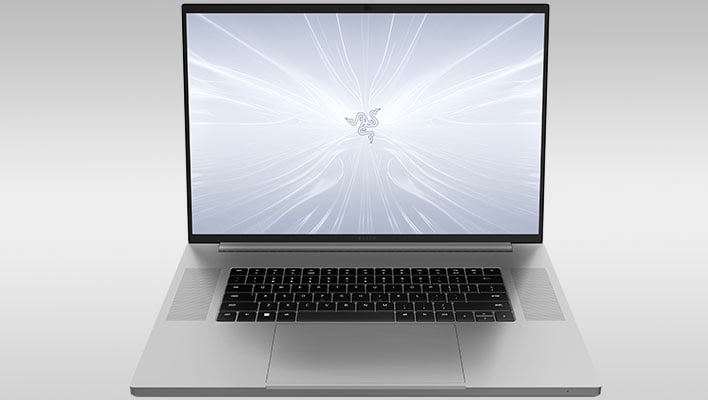Before I even get started discussing the specs of Razer’s upgraded Blade 18 gaming laptop, I implore everyone to clench their fingers and offer a fist-bump to Razer for helping to keep big and bad notebooks in style. Now take that same fist and punch your wallet or purse so it can get used to the pummeling that will ensue if you decide to order one of these beastly laptops.
Pricing for the 2024 Blade 18 starts at $3,099.99, which is the opposite of cheap. What you get in return, however, is a premium configuration highlighted by its 18-inch display with mini LED backlighting, 2560×1600 resolution (QHD+), 300Hz refresh rate, and 100% coverage of the DCI-P3 color space. It’s also a Calman Verified factory-calibrated display, which is not something you’d find on a typical laptop.
Alternatively, buyers can select a 4K display with a 200Hz refresh rate, which Razer says is a first in the 18-inch form factor. And like the mini LED option, the 4K LCD display is Calman Verified and factory calibrated, along with serving up 100% of the DCI-P3 color gamut.
“Thunderbolt 5 enables a game-changing level of performance, and it is exciting to see leading brands like Razer bring innovative solutions that incorporate it to market,” said Jason Ziller, VP and GM of Client Connectivity Division at Intel. “Thunderbolt 5 enables total performance for video and data of up to 120Gbps via Bandwidth Boost—three times more than prior gen Thunderbolt—and twice the bandwidth for data transfer to deliver an outstanding solution for creators and gamers.”
Finally in regard to firsts, Razer says the retooled Blade 18 is the thinnest 18-inch Intel HX-class laptop on the market, with a waistline that measures 0.86 inches (21.99mm). So while the display is physically big, it’s not a bulky laptop (as far as 18-inch systems go).
There are various upgrade options available, though not in a tidy piecemeal fashion. For example, Razer’s system configuration page shows an eye-popping $1,400 up-charge to go from 1TB to 2TB of SSD storage and $1,700 to double the 32GB of RAM to 64GB, but both of those options automatically change other key specs, hence the price difference.
Should you decide to double up on RAM for $1,400, for instance, a pop-up message lets you know that you’re also upgrading the display to the 4K panel, trading the GeForce RTX 4070 for a GeForce RTX 4090, and quadrupling the SSD storage fro 1TB to 4TB. None of that is immediately obvious before actually selecting one of the upgrade options.

Additionally, Razer’s offering a sole configuration in its Mercury colorway, which consists of a 4K 200Hz display, Core i9-14900HX processor, GeForce RTX 4090 GPU, 32GB of DDR5-5600 RAM, and a 2TB SSD for $4,499.99.